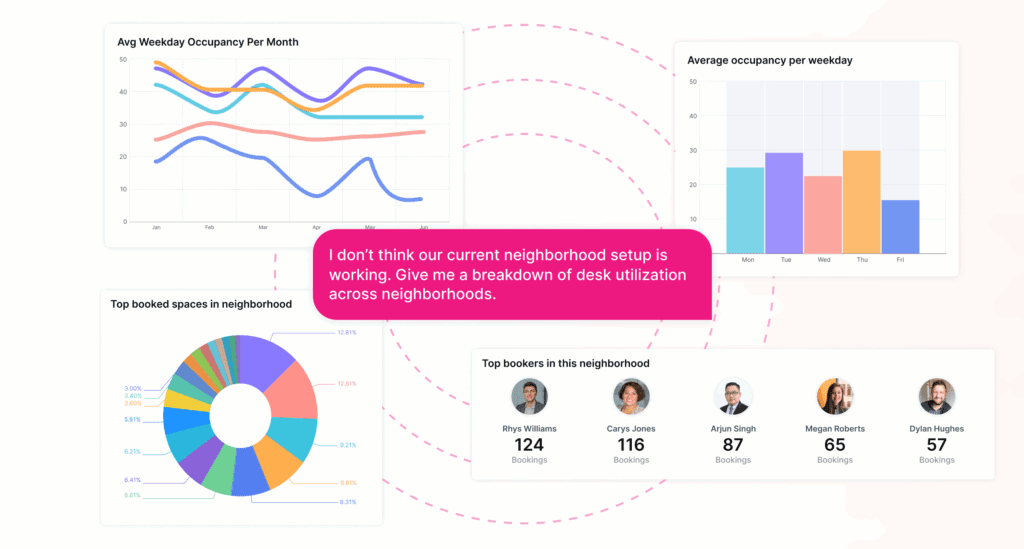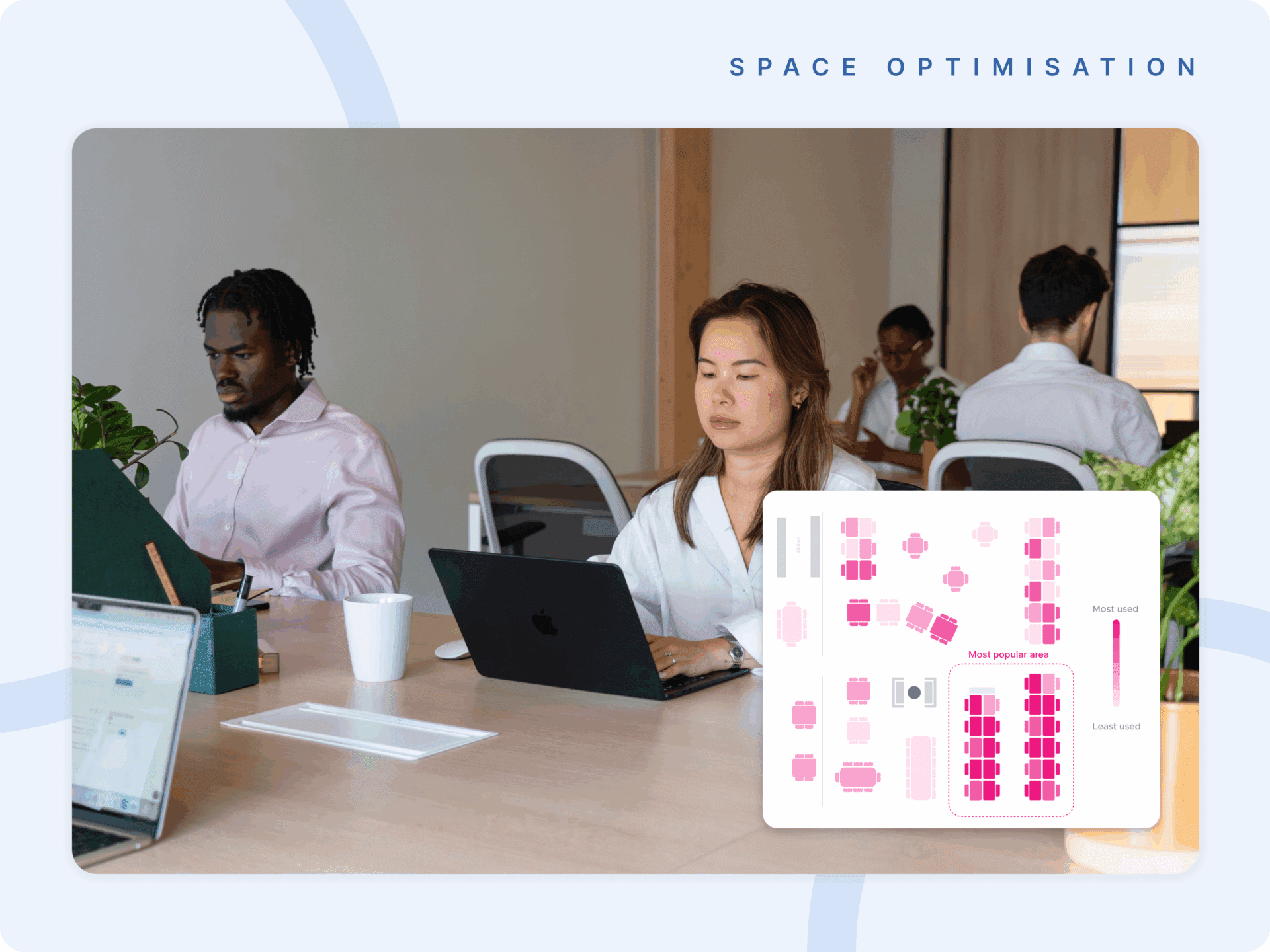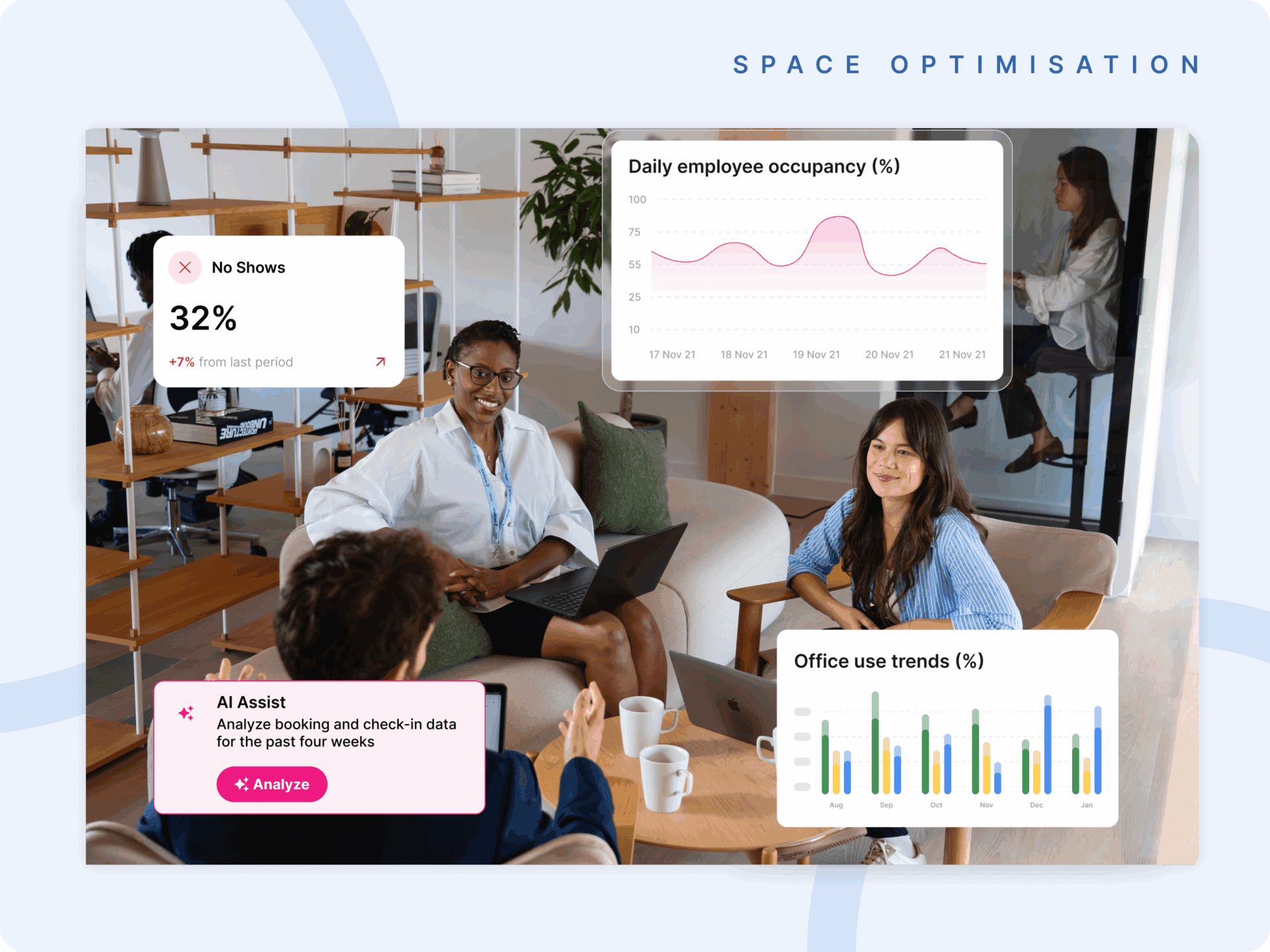Space management is the process of planning, organizing, and optimizing how physical office space is used. Traditionally, it meant floorplans, occupancy limits, and ensuring desks and rooms were available for employees. At its most basic, space management helps organizations align their real estate footprint with their workforce.
But in 2025, space management has evolved far beyond seating charts and static capacity plans. Rising real estate costs, unpredictable attendance, and executive demands for ROI have transformed it into a strategic discipline. At Kadence, we believe space management is no longer about facilities alone. It is about turning office utilization into performance data that drives smarter decisions at every level.

What Is Space Management?
In simple terms, space management ensures that workplaces are used efficiently. It covers:
- Monitoring how desks, conference rooms, and shared areas are occupied.
- Adjusting layouts and capacity to fit workforce needs.
- Meeting compliance and safety requirements.
Historically, companies relied on CAD drawings and Integrated Workplace Management Systems (IWMS) to track their offices. These tools helped facilities teams understand square footage, allocate desks, and produce compliance reports.
The problem is that these tools were often rigid, hard to use, and disconnected from the day-to-day reality of how people actually use offices. They captured space as it was designed, not as it was lived in.

Why Space Management Has Changed
The workplace has entered a new era of unpredictability. Employees no longer follow fixed schedules. Some days offices are busy, others they are nearly empty. Without accurate data, companies risk wasting money on unused real estate or failing to provide enough space when demand peaks.
Three forces are driving this change:
- Volatile attendance patterns: Traditional planning assumptions no longer hold.
- Rising real estate costs: With property one of the largest expenses after people, executives expect evidence of ROI on every square foot.
- Outdated tools: Legacy IWMS systems cannot keep pace with real-time coordination, integrations, and the needs of modern enterprises.
Executives want more than floorplans. They want a single source of truth that links people, space, and time to deliver efficiency, optimization, and performance.

The Workplace Operations Perspective
Kadence defines workplace operations as the orchestration of people, space, and time so that every resource drives performance. Space management is central to this model. It is no longer a back-office exercise but a strategic capability that informs executive decision-making.
Space management data supports:
- Portfolio optimization: Knowing which sites to shrink, grow, or repurpose.
- Scenario planning: Modeling what happens if attendance doubles or halves.
- Workforce efficiency: Aligning space with how employees actually collaborate.
- Cost control: Identifying underused areas and eliminating wasted spend.
For CFOs, COOs, and CHROs, this data answers pressing questions: Do we need this office? Should we convert unused desks into collaboration space? Are we providing the right environment for productivity?
How Kadence Reimagines Space Management
Kadence is building the Workplace Operations Platform — a unified system that fuses people, space, and time into a single source of truth. Our approach to space management blends IWMS-grade power with a modern coordination layer designed for today’s enterprises.
With Kadence, organizations can:
- Access real-time occupancy and booking data in a unified dashboard.
- Use Kadence Sense to capture accurate workplace occupancy data without deploying sensors.
- Automatically release no-show bookings back into the system to prevent wasted space.
- Build custom analytics dashboards with Insights Plus, designed with our data science team to inform real estate decisions.
- Manage office traffic with Neighborhoods, aligning team schedules to balance attendance and avoid overcrowding.
- Gain insights into collaboration patterns, team cadences, and neighborhood occupancy to enhance the employee experience and wellbeing.
- Optimize space allocation by tracking the most-used buildings, floors, desks, or rooms, and match cleaning or HVAC services to real demand.
- Leverage features like interactive floorplans, capacity limits, and guest bookings to plan resources effectively.
The result is a system where every square foot contributes to performance and every decision is backed by reliable data.
Why Space Management Matters Now
Office use patterns are too variable for static planning. Leaders can no longer rely on assumptions about headcount or averages across the year. They need real-time data to know what is happening today and predictive insights to plan for tomorrow.
Kadence customers are already proving the impact. Publishing group Karger achieved an 80 percent reduction in their office footprint without compromising productivity by using Kadence to analyze utilization data and right-size their space.

Space management provides this clarity. By combining occupancy data with booking records and visitor flows, companies can align resources with actual demand. That means avoiding unnecessary leases, improving employee experience, and being ready for shifts in how work happens.
This is why space management has moved from a facilities responsibility to a C-suite priority.
Turning Space Into Strategy
Space management has become a strategic capability for organizations that want to balance cost, performance, and employee experience. Companies that treat it as part of workplace operations gain:
- Reduced real estate spend by eliminating waste.
- Better alignment between people and the spaces they use.
- Smarter investment in collaboration areas and amenities.
- Clear visibility for portfolio and scenario planning.
Those that still treat space management as floorplan administration will miss the opportunity to create workplaces that deliver measurable business outcomes.

Final Thought
Space management is more than allocating desks and drawing floorplans. It is about transforming office utilization into actionable performance data. At Kadence, we are building the platform that makes this shift possible.
Ready to reimagine space management? Book a demo with our workplace operations experts to see how Kadence can help you turn every square foot into strategic advantage.





